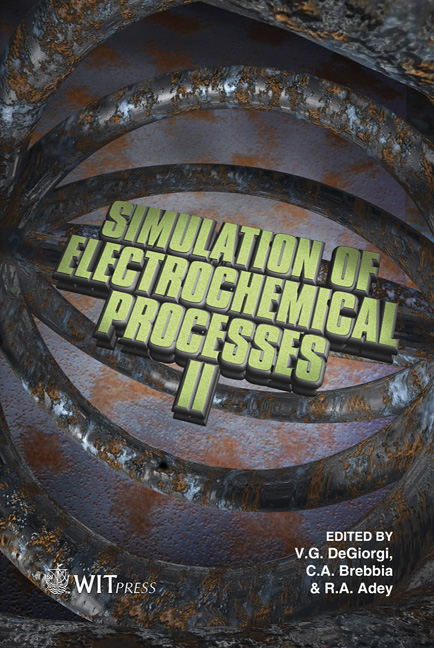Fast Solution Techniques For Corrosion And Signatures Modelling
Price
Free (open access)
Transaction
Volume
54
Pages
10
Published
2007
Size
583 kb
Paper DOI
10.2495/ECOR070221
Copyright
WIT Press
Author(s)
A. J. Keddie, M. D. Pocock & V. G. DeGiorgi
Abstract
The boundary element method (BEM) involves field nodes interacting with each other. Solving the ensuing matrix equations often requires an iterative solver to be used at a cost that scales with the second power of the number of nodes per iteration. This limits the size of the problem that can be solved. The fast multipole method (FMM), introduces hubs to reduce the number of direct interactions between field nodes in the BEM. The cost of calculating the matrix-vector multiplication using the FMM scales linearly with problem size. This paper contains a brief mathematical description of the FMM for Laplace’s equation in which a Taylor series expansion is used to model Green’s function. The computational performance of the FMM applied to modelling an impressed current cathodic protection (ICCP) system of a naval vessel is then investigated and the results compared to those of a commercial BEM solver and experimental (physical scale model) results. For this relatively small example model, it is shown that the cost benefit of the FMM is eight times greater than that of the commercial solver. Greater savings will be obtained on larger models. The results confirm that larger, more detailed, corrosion problems can be solved faster using the FMM. It is also shown that the capabilities of the FMM offer the choice between reduced processing time and enhanced accuracy. This provides the user with the opportunity to sacrifice accuracy in order to run less computationally expensive problems, for example during parametric studies. Keywords: boundary element methods, fast multipole method, ICCP system.
Keywords
boundary element methods, fast multipole method, ICCP system.





